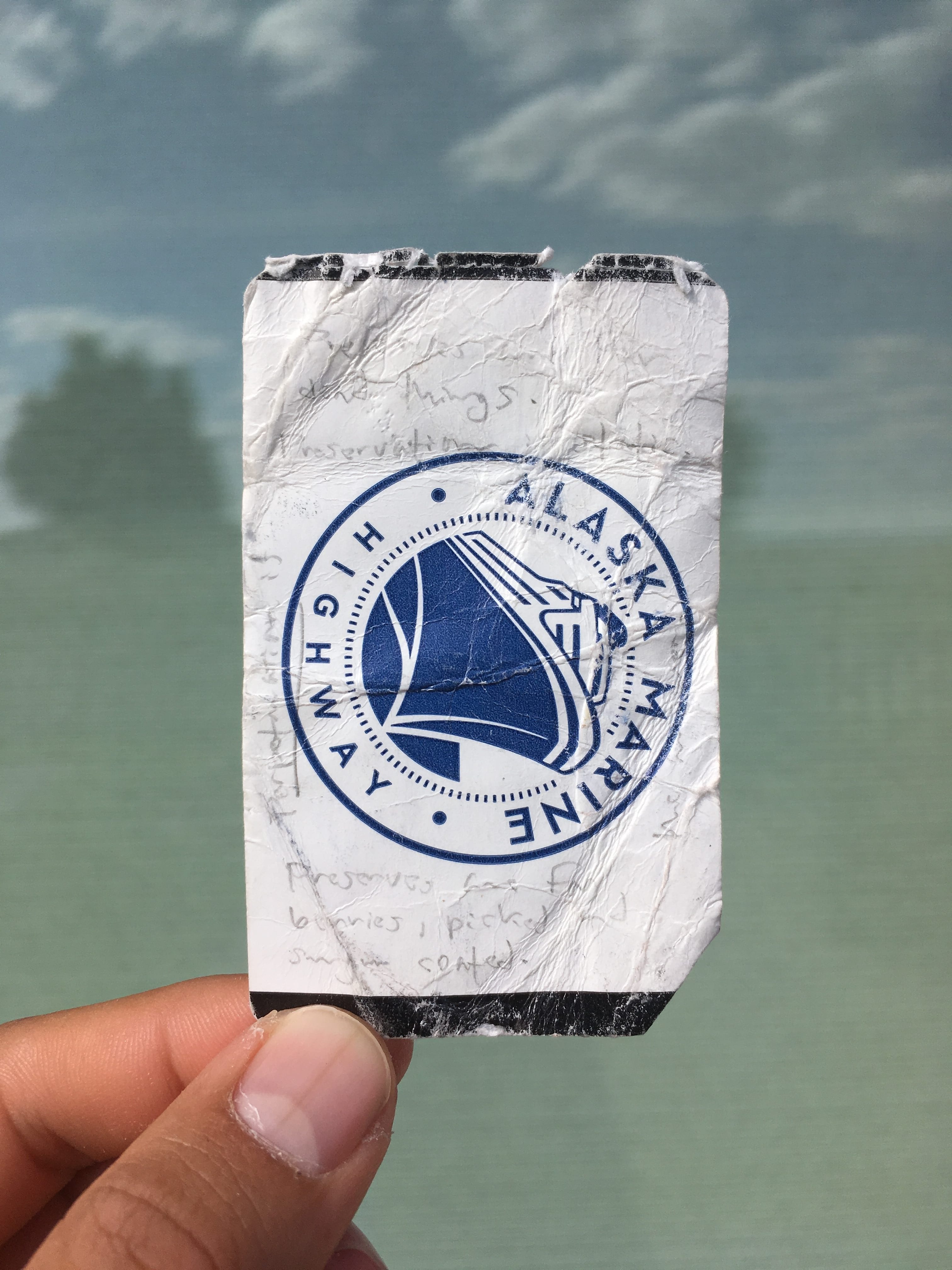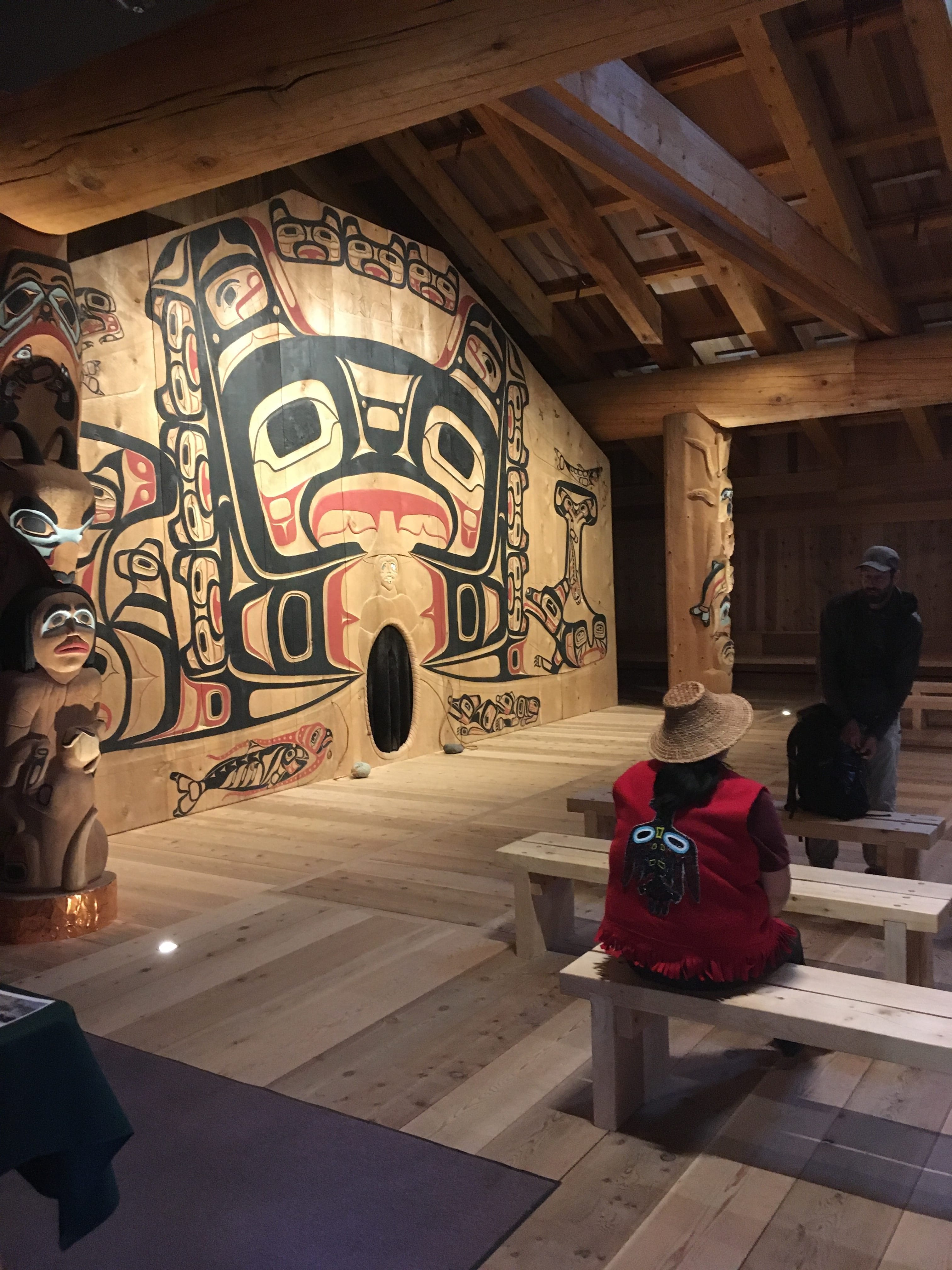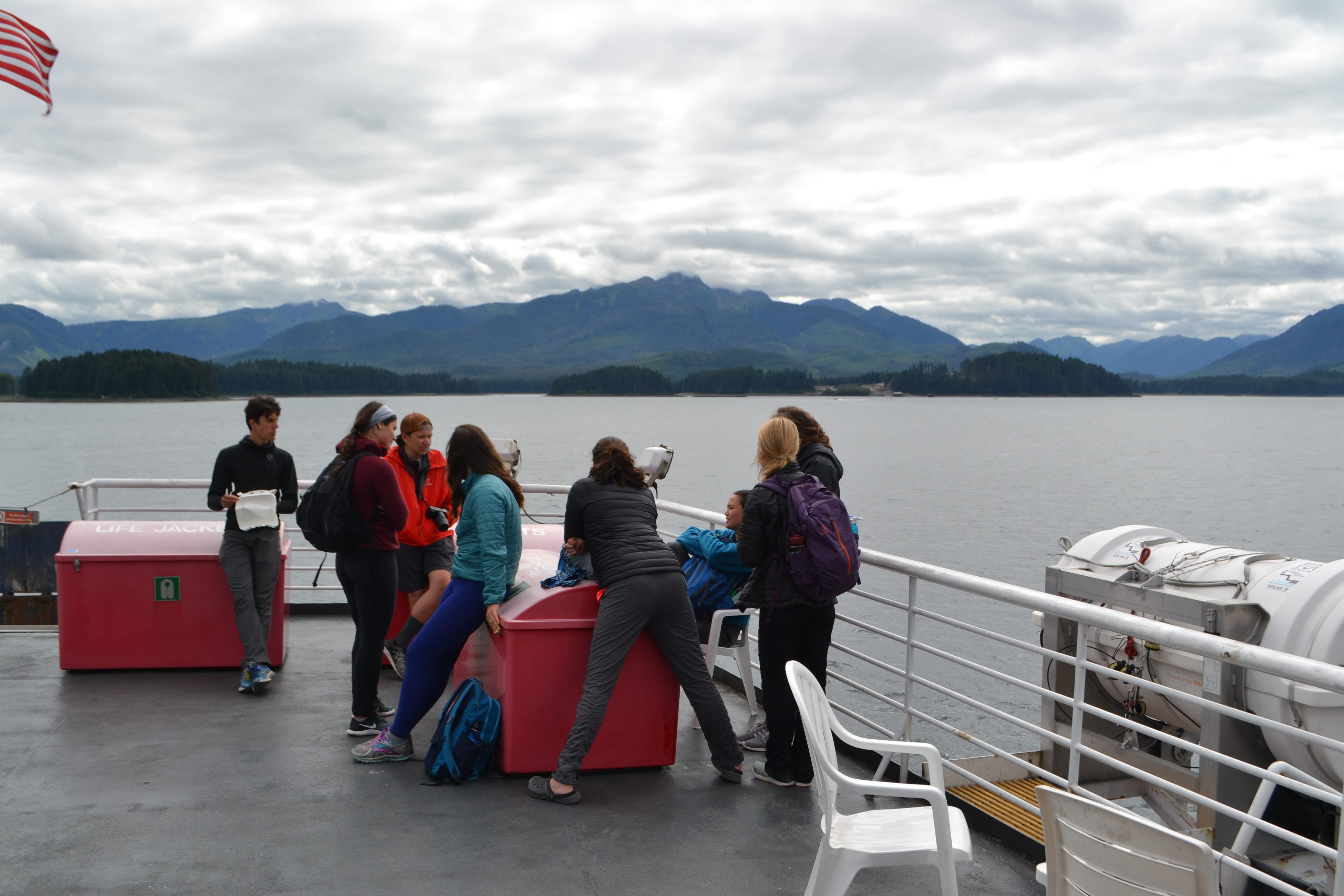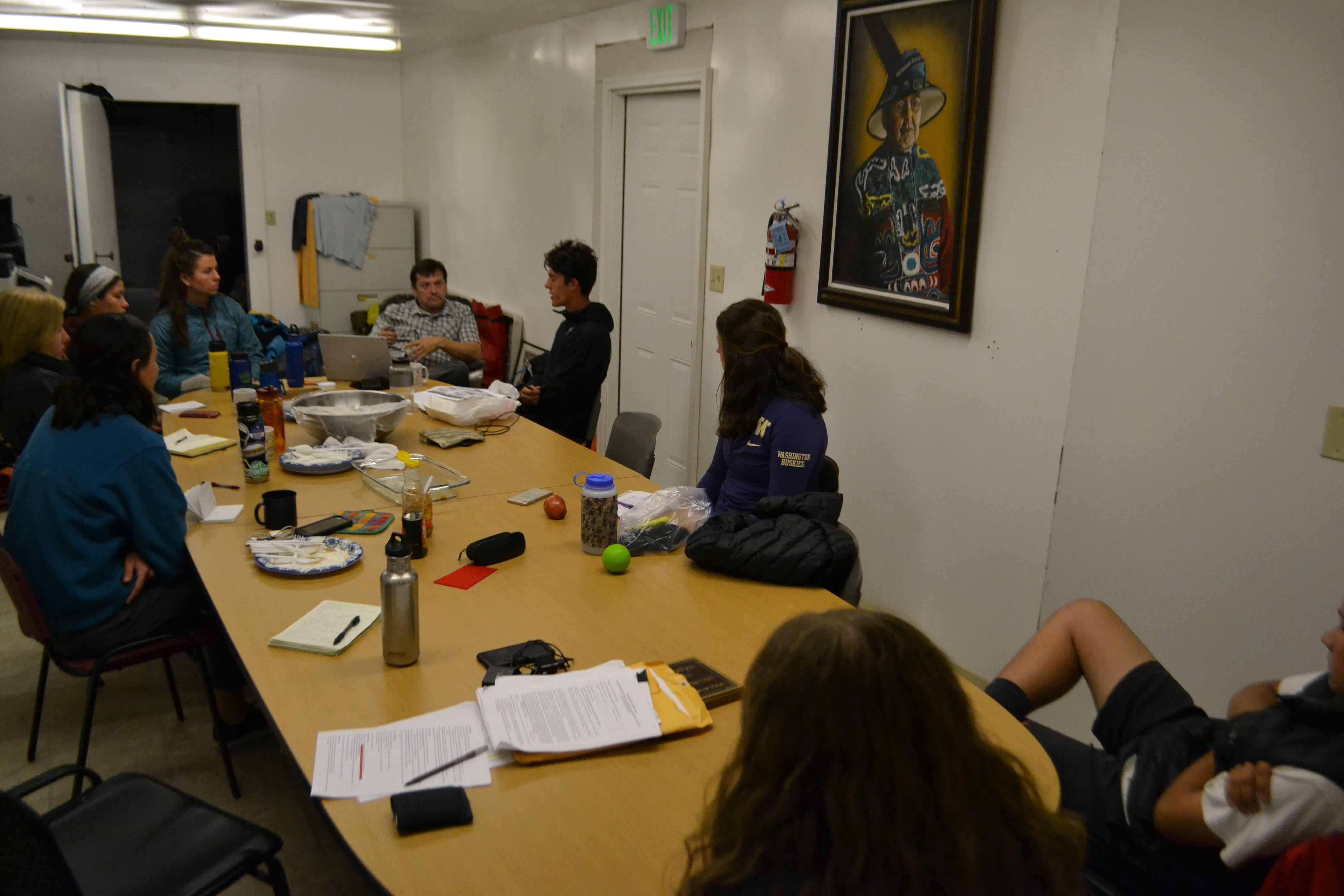“I believe time takes care of everything. Even if a goal seems unattainable, the universe will help fill in the gaps along the way if we remain patient and diligent.” –Bob Starbard
“We are what we are based on where we are from, but it is not our anchor–not ishaan… We are an entrepreneurial people.” –Bob Starbard
By Marco Ammatelli
August 1st, 2018.
For extended interpretation by Tim Billo, be sure to read to the bottom of the post.
…
“How do you define tribe?”
The question lingered in the HIA conference room as if to suggest the unexpected. Leaning back in his chair, Bob Starbard nodded towards me: “We can start with you.”
Though an answer migrated to the front of my mind, I paused to consider my response. The situation reminded me of a passage in John Muir’s Travels in Alaska, a passage in which Muir explains his purpose for visiting Glacier Bay to a Tlingit congregation. Ultimately, a common reverence for the land and an unanticipated truthfulness united him with the audience. Even now, he is remembered as speaking “on the same side of the river, eye to eye, heart to heart.”
Throughout our discussion, I felt this river. This unanticipated truth. The words of the Tribal Administrator and Alaska Native seeped into my ears with currents of clarity, even if some complexities washed over my head. Like the first surge of water across a dry creek bed, he spoke to overcome drought. No small preconception escaped untouched. The immersion, both an honest conclusion to our time in Hoonah and a sincere introduction to our travels in Glacier Bay, marked an awakening. With each hour that passed, we came closer to the same side of the river, eye to eye and heart to heart, crossing perspective after perspective. Our learning in Hoonah was only the beginning of a greater dialogue. And many crossings remained.
…
Our last morning in Hoonah, Bob sat on the edge of his chair at the head of the conference table, his brow pensive, one hand slowly outlining the curve of his upper jaw while the other rested near an open laptop and a mug of coffee. He looked us all in the eye with the intensity and calculation of a Raven, derived from weeks, if not months, of thinking. This was his chance to set a precedent. To speak his mind and his heart. And his focus was clear: Before we entered their homeland—and the political sphere of the National Park Service in Glacier Bay—he demanded we understand the mission of the Xunaa Káawu.
To Bob, this began with one vital perspective: Acknowledging how the Tlingit adapted, not the extent of their loss.
“‘Poor me’ is not progress.”
Despite displacement from their homeland, despite the repercussions of ANCSA—the paradoxes that stem from being judged as corporations rather than sovereign clans, and despite symptoms of isolation—whether in the cultural rehabilitation of a gap generation or the contemporary struggles with substance abuse and mental health, he insisted dwelling on victimhood only amounts to further deprivation for the Tlingit people. In reflecting on notions of self-reliance within a modernized economy, he stated: “There is a difference between asking for a ‘hand-up’ and a ‘hand-out.’”
This led to his second belief: the importance of “pulling together.” Whether in a conference room or a canoe, he reinforced the need to act in unison as the clans and the NPS navigate the future of wilderness management in Glacier Bay—at its core, a process of reconciling the place of traditional subsistence within a landscape commonly considered void of human work. In a short anecdote, Bob illustrated the futility of the Park Service’s historical resistance (See Figure). He emphasized their deep connection to the land, the knowledge and tradition the many generations of Tlingit realize through work in places that sustain their sense of being. For the better part of the morning, we discussed the current state of the relationship between both groups, as well as the evolution of park policy, concluding with a stark reminder:
“It’s fragile, much like nature… [Our relationship] is at its beginning. It is very much a creation of the people who are currently leading. And we haven’t made it systemic yet. We haven’t made it a part of our foundational documents and what carries beyond us. I don’t want to leave you all with the ‘everything is good’ hunky-dory there. It’s not. It’s a work in progress. And it very much could still fall apart.”
While his statement exposed the vulnerability of the partnership, he remained resolute. As a man with many visions for his people, he often repeated a guiding maxim, a measure of courage for the crossings he hoped to partake. This one seemed to ring true since time immemorial:
“I believe time takes care of everything. Even if a goal seems unattainable, the universe will help fill in the gaps along the way if we remain patient and diligent.”
Beyond hope, a sense of commitment emanated from his voice. When he sat forward in his chair, his hands clasped together like interlocking feathers, his movements commanded the gravity of the room. From sources of struggle and strife, his river flowed with purpose. And knowing we, in that moment, listened on the same banks, he extended this power to us: the responsibility of filling gaps. As a diverse collective of ambassadors, he urged each of us to one day return to Hoonah and serve the community in our own way, just as the community had served us. Whether months or decades from that day, he hoped we would bring the learning full circle. He hoped we would share our experiences beyond the bounds of Glacier Bay, and he hoped, in our many crossings, we help return the ethics of the Huna Tlingit to their homeland.
…
With only minutes before the ferry departed, Bob offered one last piece of advice. Without paper in my hands, I rushed to transcribe his phrases on the only material remaining in my pocket: a laminated Alaska Marine Highway Ticket. In a frenzied hand, I tried to capture the truth in his words:
Front: Change is vital. Adapting.
Back: Preservation is for dead things; preservation is static. Preserves are berries, picked and sugar coated. Perpetuation is the answer.

Weathered and, likely at times, water-soaked, this ticket stayed in my pocket for the entire trip (Marco Ammatelli)
Scrambling down the grated ramp towards the mouth of the ferry, tickets and IDs seemingly crammed into the most difficult places to reach, the river swept us forth. Most of us carried two backpacks; a few carried extra dry bags containing bagels and cheese, assisting those who heaved duffels as heavy as glacial erratics; but despite full hands, all of us carried something much larger. Waiting to board the vessel, I looked back at Hoonah. The piers, the shoreline where children swim despite glass shards and rusted metal, the green tip of Yaakw Kahidi’s roof, even the lone road that exits town and turns to dirt amidst sitka spruce and muskeg. With each place, I associated a story, an extension of welcoming community. Lunging up the steep stairs to the main cabin, I counted the innumerable people who gave our visit meaning, their generosity, their good humor, their resilience. I held their kindness close. The imprints circled me like ripples.
Between bites of scrambled eggs from the Fisherman’s Daughter and pinball conversation on the upper deck, I studied the vast silver above and below the guard rail, the mirror-like continuum interrupted only by fringes of blue from clear-cut foothills on either side. A deep sense of stewardship left me still, overcome with contemplation but not frozen. Battered by wind and the first hints of rain, I retired to the solarium. The yellow tint of the room softened the view of ISP as we passed, but more than anything, the revelations of the morning allowed me to reframe its contradictions. Instead of preconception, I opted to adhere to the plan, a vision for the long-view instilled by only a short stay in Hoonah.
So I looked forward, out across Icy Strait to the Tlingit headwaters.
Gustavus awaited, Kim and Melanie Heacox the first of many warm welcomes.
John the Driver likely sat in the front seat of his ancient van with even more ancient compression brakes, preparing to escort a hungry cohort of college students to Sunnyside market so they could stock up on Fuji apples from Argentina at $5.67 per pound.
Farther yet was Bartlett Cove, the Vis, the plodding of plastic wheel barrows down a dirt path to a campsite with blueberries and firm sand.
Looming in the mist, Xunaa Shuká Hít was sheltering visitors with the strong smell of cedar, and inside, Paula was speaking of her people and homeland with simple eloquence, her emotion enough to shield anyone from the cold of Alaskan rain.
The skeleton of a once pregnant whale was also waiting. She engendered thoughts of scale and timing and coexistence to each passerby reading her plaque.
Near the warming hut, wood for chopping was growing moist by the minute. An axe was waiting for a strong hand or two.
A cache of flour tortillas, beans, bricks of cheddar cheese, and a massive bottle of Sriracha remained stowed away in Tim’s duffel, hiding beneath piles of pots from which we would drink grey water with Swiss Miss and later sanitize with seaweed and salt water.
Too, a fire pit on the beach was waiting. Waiting for the sun to set and waiting for reflection to circle glowing faces chased by smoke and the passing of the first squares of dark chocolate.
Everything was in front of us as we sailed across open waters on the LeConte. There was no way to predict our path through Glacier Bay.
But we knew one thing for certain: From one bank to the next, we were off to accept our duty.
…

Tim speaking with Paula after she recounted the Tlingit Migration Story in Xunaa Shuká Hít (Marco Ammatelli)
(Figure):
Harvesting spruce-roots is an enduring tradition in Tlingit culture, affording weavers material for crafting baskets and hats among other objects. Paula’s hat reminded me of a story told by Bob Starbard earlier in the day. Below is the ironic punchline:
…Despite informing park rangers the approximate area where experimental spruce-root harvests would take place, the park rangers found no evidence of ecological or aesthetic disturbance in the zone…
…
Commentary and Clarifications by Tim Billo
One of the things that Bob helped us understand was the difference in goals between HIA and Huna Totem. In Bob’s mind the goal of HIA is to uphold the cultural traditions and cultural pride of the community. HIA also holds governmental power as a federally recognized tribe. [As a side note, the “tribe” status is artificial since the Tlingits traditionally operated as clans. One of Bob’s recent accomplishments has been in the location and repatriation of cultural artifacts taken from Hoonah in the distant past–such as a 200 year old box drum, a cultural form previously attributed only to the Klukwan clans further north. These items are officially repatriated to the tribe, but later a discussion must ensues on which clan has rightful access to the items.] Corporations on the other hand, such as Huna Totem, wield power in the form of money. In effect they were set up as an attempt by the federal government to help tribes take care of themselves, but in practice the goals of corporations are often at odds with the goals of tribal entities such as HIA. Often money speaks louder than it should. Bob would like to see the power being consolidated in the federally recognized governing body of the tribal entity–that is HIA. There are many ways that the HIA looks after the health and well-being (physical, cultural, psychological, and otherwise) of its people, that a corporation cannot or should not be expected to do. That is, the corporate model of simply handing out dividend checks has not proven to offer a holistic good to the community. While Huna Totem does engage in cultural activities, Bob would like to see HIA at the center of those activities. He has big plans for helping HIA return to the center of the community, and to some extent, that means putting HIA back on sound financial footing so that it can compete in some of the areas in which the community may currently look to Huna Totem. Bob has seen a lot in his time, starting with his experiences with overt racism as a child in the 1960s, but the time of ishaan (poor me) is past. Bob is guiding the HIA and Huna Tlingit into a new space–a space where heads are held high, and they again actively control their own destiny in their own lands.







